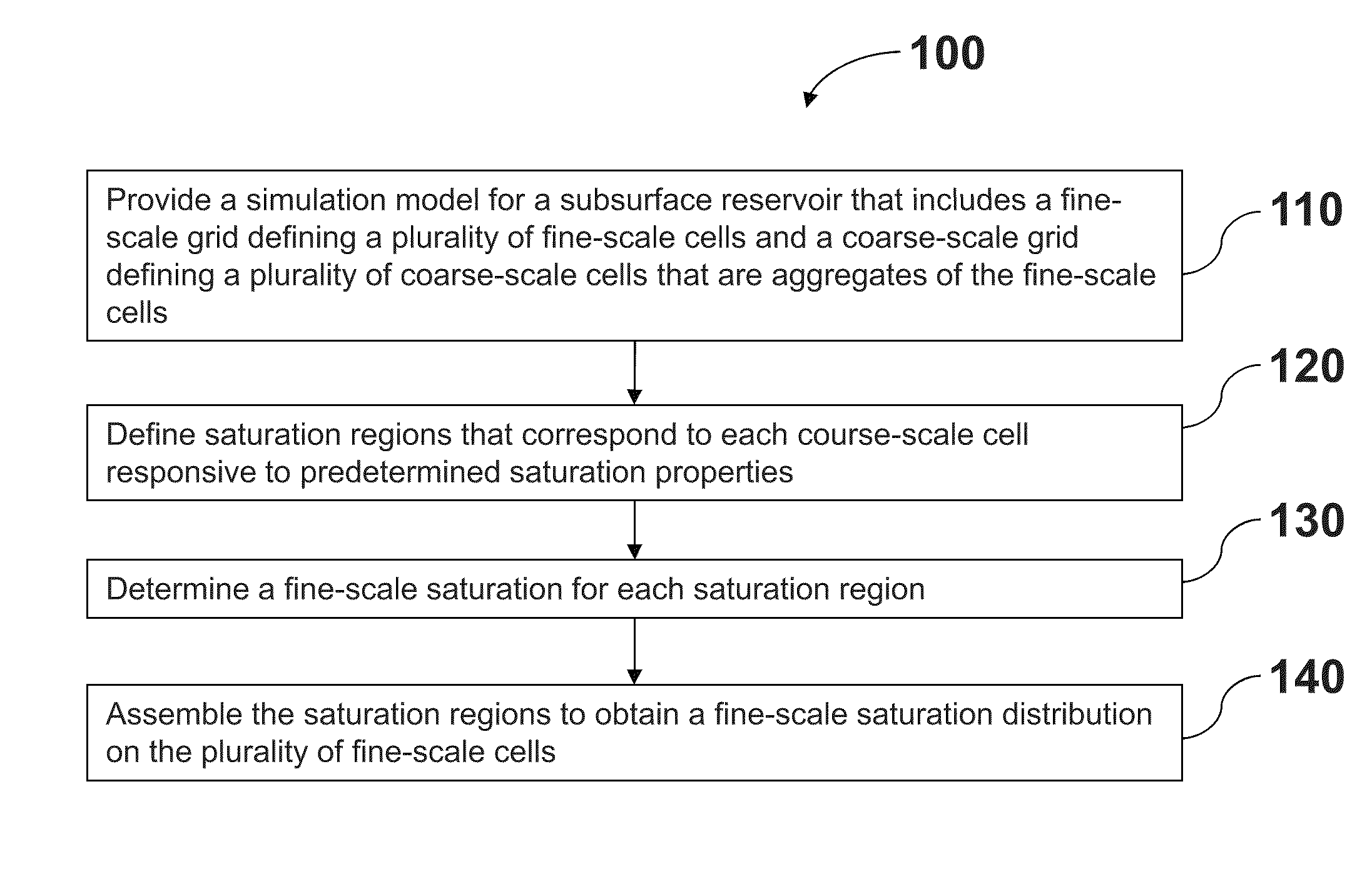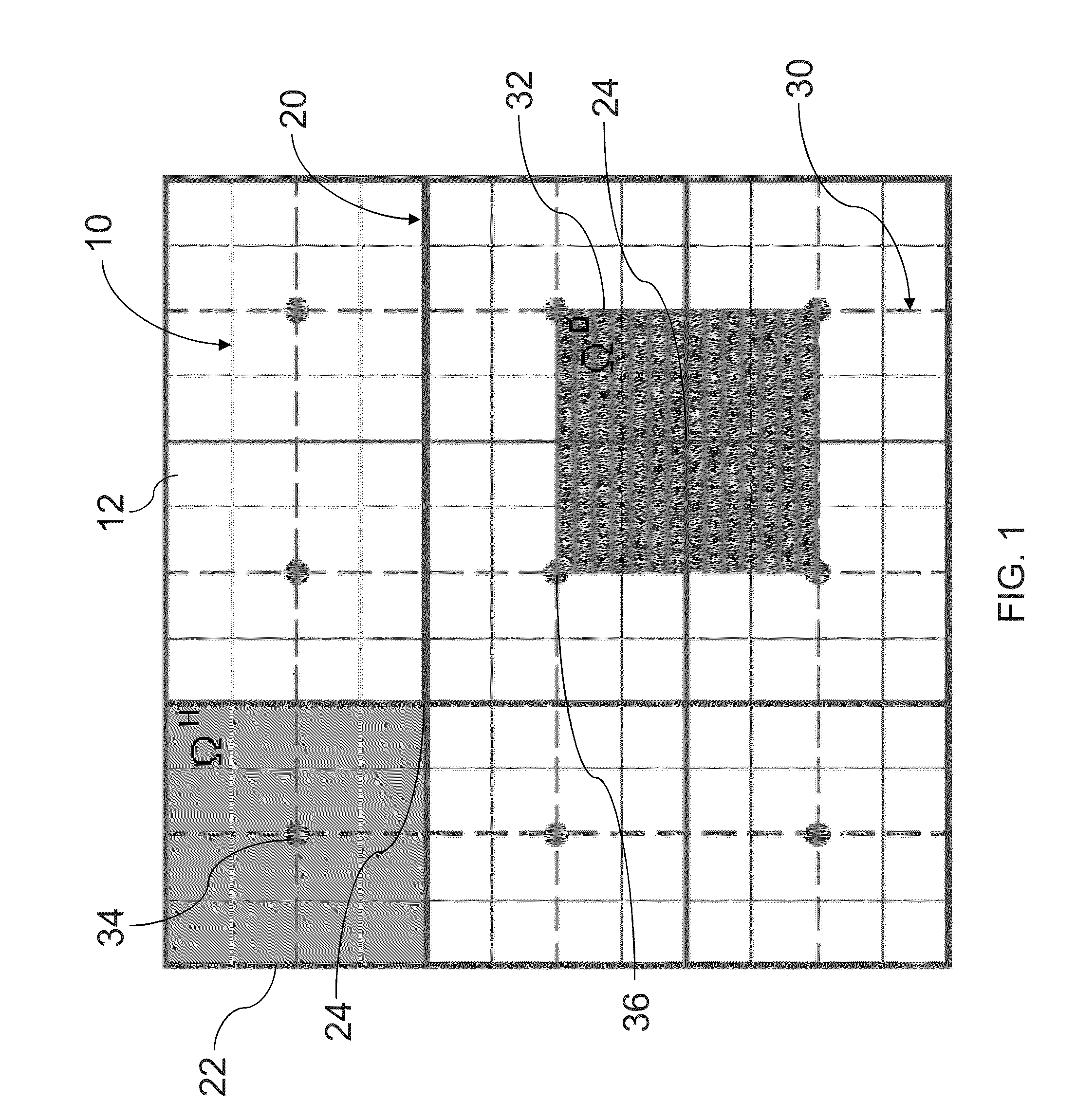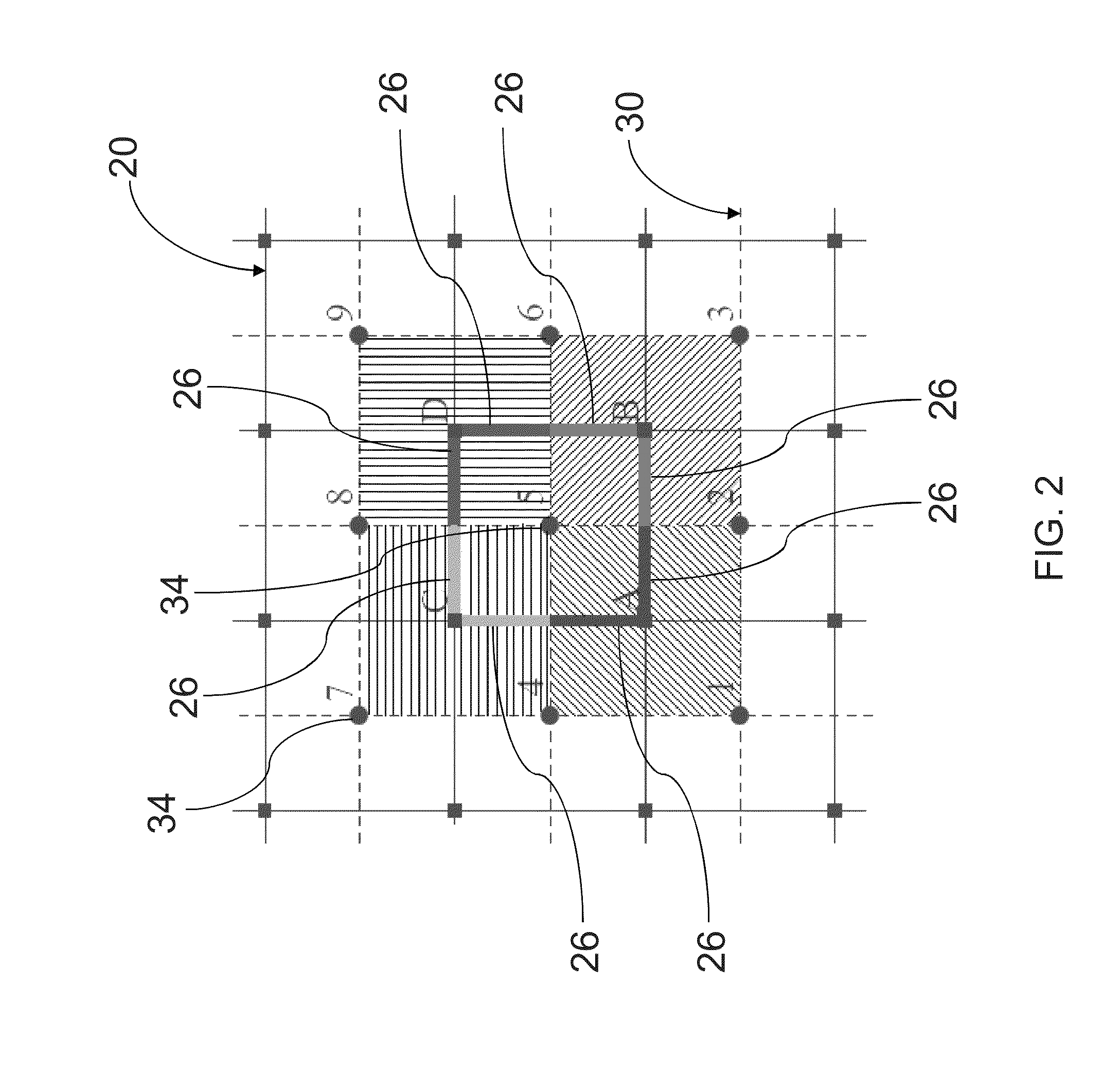Multi-scale method for multi-phase flow in porous media
a multi-scale method and porous media technology, applied in the field of subsurface formation simulations, can solve the problems of prone to significant errors in the method, the difficulty of coarsening the transport equation more than the elliptic pressure equation, and the method has typically been prone to significant errors or only slightly less expensive problems
- Summary
- Abstract
- Description
- Claims
- Application Information
AI Technical Summary
Benefits of technology
Problems solved by technology
Method used
Image
Examples
example 1
Homogeneous Media
[0093]Consider a 2-dimensional reservoir model of 700 ft×700 ft with homogeneous permeability k=100 md. Even though the model is 2-dimensional, an assumption that the model has a unit thickness of 1 ft in the third direction is made for convenience in the description of operating conditions. The fine-scale grid, 70×70, is uniformly coarsened into a 10×10 coarse-scale grid. The upscaling factor is 49 as each coarse-scale block comprises 7×7 fine-scale cells. The reservoir is originally saturated with oil and water is injected to displace the oil. Water is injected from the upper left corner and production occurs in the lower right corner. The initial reservoir pressure is 2000 psi. The injection rate of the water is constant at reservoir condition (50 bbl / day) and the reservoir fluid is produced at the same rate. The injection and production rates are evenly distributed in the coarse-scale grids (e.g., injection in the left upper coarse-scale grid and production in t...
example 2
Heterogeneous Media with Log-Normal Permeability
[0100]FIG. 11 depicts the permeability field used in the second example. The reservoir model has a heterogeneous permeability field with moderate correlation lengths. The same reservoir model, as in the previous case, is employed except that the permeability field is distributed as log-normal with the mean value of logarithmic permeability 4 and variance 2 in milli-darcy and the spatial correlation length is given by 0.2. The permeability is generated by the Sequential Gaussian Simulation Method.
[0101]FIGS. 12 and 13 compare the pressure and saturation distribution at t=0.8 PVI for the three different methods, FM, MSOM and MSAT, respectively. In the presence of highly varying and correlated permeability field, the water saturation distribution exhibits a complex structure in FIG. 13, which contrasts with the simple, symmetric saturation distribution in FIG. 8 of the previous example. The accuracy of the numerical results from the multi...
example 3
A Heterogeneous Model with Dirichlet Boundary Conditions
[0104]FIG. 16 shows the logarithmic permeability field in the third example. The permeability field is associated with a 220×54 fine-scale grid and a 20×6 coarse-scale grid, which yields an upscaling factor of 11×9. The initial pressure is 4000 psi. The left boundary is kept at constant pressure 4000 psi with water injection and the right boundary is kept at constant pressure 1000 psi with reservoir fluid production. As the production and injection rates are continuously changing along time, a characteristic time may be represented by
[0105]τo=ϕLx2μ_k_pleft-pright(Equation54)
where μ and k denote characteristic viscosity and permeability, respectively, and Lx is the model dimension in the x-direction. The arithmetic average of water and oil viscosity are represented as μ and the volume average of permeability as k.
[0106]FIGS. 17A-C and 18A-C compare the pressure and saturation distributions at t=4τo for the reference soluti...
PUM
 Login to View More
Login to View More Abstract
Description
Claims
Application Information
 Login to View More
Login to View More - R&D
- Intellectual Property
- Life Sciences
- Materials
- Tech Scout
- Unparalleled Data Quality
- Higher Quality Content
- 60% Fewer Hallucinations
Browse by: Latest US Patents, China's latest patents, Technical Efficacy Thesaurus, Application Domain, Technology Topic, Popular Technical Reports.
© 2025 PatSnap. All rights reserved.Legal|Privacy policy|Modern Slavery Act Transparency Statement|Sitemap|About US| Contact US: help@patsnap.com



